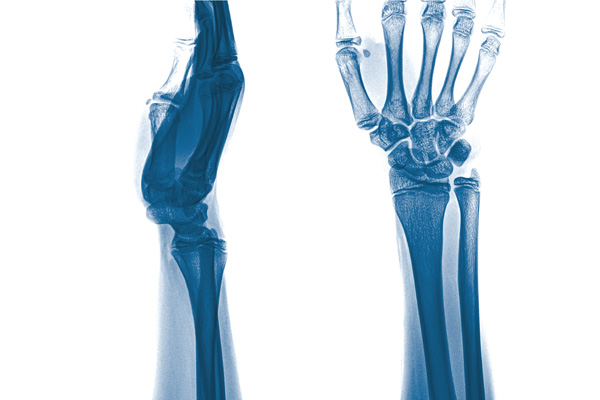| What is Perilunate Dislocation?21 August 2017 If you've never heard of a perilunate dislocation, you wouldn't be alone, as this type of injury only accounts for less than 10% of all wrist injuries. Although uncommon, it is a pretty serious wrist injury, and is not helped by the fact that it is often misdiagnosed due to its infrequency and subtle imagery on x-rays and scans. If you've ever tried looking up information for perilunate dislocations, you have may been overwhelmed with all of the medical jargon that is presented to you, so here at Wrist Supports we've put together a simple guide to understanding this injury. What is a Perilunate Dislocation?Perilunate dislocations, often classified as carpal dislocations, are uncommon but potentially devastating closed wrist injuries. This injury is seen when the ulna bone from the forearm becomes disjointed from the lunate bone in the wrist. They are sometimes overlooked or misdiagnosed on initial imaging on an x-ray due to their very subtle appearance. Overall, carpal dislocations such as perilunate dislocations account for less than 10% of all wrist injuries.  An x-ray showing the ulna bone detached from the carpal bones in the wrist Causes and Symptoms of Perilunate DislocationThis injury usually occurs from high-energy trauma to the carpus, for example when someone falls on a bent wrist. Damage from perilunate dislocation is not often immediately noticeable, and most symptoms will be identified as vague pain or swelling in the wrist. As many as 25% of cases will also see symptoms similar to carpal tunnel syndrome (CTS), such as a tingling sensation in the hand, loss of wrist motion, or muscle atrophy at the thumb base. This is because perilunate dislocations can sometimes interfere with the median nerve in the hand, bringing up symptoms often associated with CTS. How Do You Treat a Perilunate Dislocation?If caught immediately, typically within 72 hours, perilunate dislocations can be easily treated with gentle traction, followed by splinting and casting. However, as initial diagnosis is frequently missed or incorrectly diagnosed for this condition, corrective surgery will often be required, followed again by casting. Full recovery from a perilunate dislocation can sometimes take up to a year, and follow up treatments and physiotherapy may be needed for as long as 10 years after the fact. Even with treatment, there is still a 60% chance that a patient will develop degenerative arthritis, as well as experience general wrist stiffness and diminished grip strength, however most patients still maintain reasonable hand function. How We Can Help At Wrist SupportsSince recovery for perilunate dislocation is usually a long process, using wrist supports like braces and splints are often required after your cast has been removed, to help support your wrist as it strengthens. Here at Wrist Supports, we can help prepare you towards your journey to recovery, with comfortable and non-restrictive supports to help you regain normal hand and wrist function. Click the link below to browse our full range of support for perilunate dislocations. Have you ever experienced a perilunate dislocation? Let us know in the comments below, or reach out to us on Facebook or Twitter. |
FREE UK DELIVERYon orders of £40 and over. EXPERT CUSTOMER SUPPORTRead our reviews. EASY PRODUCT RETURNSwith our 30 day returns policy. |
